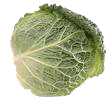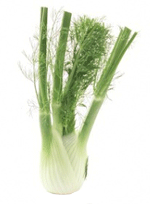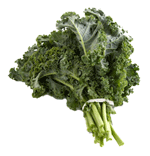Ingredient Glossary
A B C D E F G H I J K L M N O P Q R S T U W X Y Z
A
ASIAGO - An Italian cheese from the Veneto region. When young, it is mild and melts easily. It can be eaten by itself. After it has aged, it has a more piquant, saltier flavor and is usually used only for grating and cooking.
B
BEETS - Called BIETOLE in Italian. Commonly known as the garden beet, this firm, round root vegetable has leafy green tops, which are also edible and highly nutritious. The most common color for beets is a garnet red. However, they can range in color from deep red to white, the most intriguing being the Chioggia (also called "candy cane"), with its concentric rings of red and white. If the beet greens are attached they should be crisp and bright.
In addition to the garden beet are the spinach or leaf beet (better known as Swiss chard), the sugar beet (a major source of sugar) and the mangold (used as fodder).
BORLOTTI BEANS - This classic Italian bean is a medium large tan bean, splashed with red/black to magenta streaks. It is very popular in Italian and Portuguese cuisine, often used in soups and stews. Borlotti beans are dried beans and are known as "cranberry beans" or "French horticultural bean" in the U.S. If you can't locate cranberry beans, an acceptable substitute is the pinto bean, and a second (but not as close) substitute would be red kidney beans.
C
CAPERS - The flower bud of a bush native to the Mediterranean and parts of Asia. The small buds are picked, sun-dried and then pickled in a vinegar brine. Capers range in size from the petite nonpareil variety from southern France to those from Italy, which can be as large as the tip of your little finger. Capers can also be found salted and sold in bulk. Capers should be rinsed before using to remove excess salt. The pungent flavor of capers lends piquancy to many sauces and condiments; they're also used as a garnish for meat and vegetable dishes.
CANNELLINI BEANS - A white bean popular across Italy but particularly in Tuscany. Mild in flavor and shaped like a kidney bean, it is rarely eaten fresh, only dried.

CAVOLO VERZA - Savoy cabbage. This mellow-flavored cabbage is considered by many to be one of the best of its genre for cooking. Savoy has a loose, full head of crinkled leaves varying from dark to pale green and marked by a fine lacy pattern of veins. Choose a head that's heavy for its size. The leaves should be crisp, not limp, and there should be no sign of browning. Refrigerate, tightly wrapped, in a plastic bag for up to 1 week.
CECI - Also known as garbanzo beans or chickpeas. Shaped like small hazelnuts, they have a nutty flavor. Dried ceci are ground into flour and used to make cecina, a local specialty along the Tuscany coast.

CHARD - Also referred to as Swiss chard, this member of the beet family is grown for its crinkly green leaves and celerylike stalks which sometimes be bright red, othertimes yellow or green. Chard is available year-round but best during the summer. The greens can be prepared like spinach, the stalks like asparagus.
CHICKPEAS - Also known as garbanzo beans. Shaped like small hazelnuts, they have a nutty flavor. Called ceci in Italian.
F
FARRO - Spelt. Native to southern Europe, where it has been used for millenniums, spelt is an ancient cereal grain that has a mellow nutty flavor. The easily digestible spelt has a slightly higher protein content than wheat and can be tolerated by those with wheat allergies. Spelt flour, available in health-food stores, can be substituted for wheat flour in baked goods.

FENNEL - Florence fennel, also called finocchio, is cultivated throughout the Mediterranean and in the United States. It has a broad, bulbous base that's treated like a vegetable. Both the base and stems can be eaten raw in salads or cooked in a variety of methods such as braising, sautèing or in soups. The fragrant, graceful greenery can be used as a garnish or snipped like dill and used for a last-minute flavor enhancer. This type of fennel is often mislabeled "sweet anise," causing those who don't like the flavor of licorice to avoid it. The flavor of fennel, however, is sweeter and more delicate than anise and, when cooked, becomes even lighter and more elusive than in its raw state.
Common fennel is the variety from which the oval, greenish-brown fennel seeds come. The seeds are available whole and ground and are used in both sweet and savory foods, as well as to flavor many liquors. Though common fennel is bulbless, its stems and greenery are used in the same ways as those of Florence fennel. Fennel is available from fall through spring.
K

KALE - known as "cavolo riccio" in Italian. Kale has a mild, cabbagey flavor and comes in many varieties and colors. Most kale is easily identified by its frilly leaves arranged in a loose bouquet formation. The color of the leaves of the varieties most commonly available in the United States is deep green variously tinged with shades of blue or purple. Kale's best during the winter months, though it's available year-round in most parts of the country. Choose richly colored, relatively small bunches of kale, avoiding any with limp or yellowing leaves. Store in the coldest section of the refrigerator no longer than 2 or 3 days. After that, the flavor of kale becomes quite strong and the leaves limp. Because the center stalk is tough, it should be removed before the kale is used. Kale may be prepared in any way suitable for spinach and small amounts make a nice addition to salads.
L

LEEK - The leek is a member of the onion family, but is milder than either onions or garlic. It has a thick, white stalk that is cylindrical in shape and has a slightly bulbous root end. Leeks develop broad, flat, dark green leaves long 6 to 10 inches, and are wrapped tightly around each other like a rolled newspaper. Before using, trim rootlets and leaf ends. Slit the leeks from top to bottom and wash thoroughly to remove all the dirt trapped between the leaf layers.
M
MILLET - Hulled millet is often referred to as birdseed in the U.S. even though it is very nutritious for humans as well as birds. Like rice, millet is a staple food of the Far East. It is easily digested because it is alkaline whereas most other grains are acidic. Found at natural foods stores.
N
NUTELLA - A thick smooth paste made from chocolate and hazelnuts. Can be spread on plain cookies, bread, or toast.
O
OLIVE OIL - In Italy, olive oil is the most commonly used fat. Different regions produce very different flavored oils depending on the growing conditions. Tuscan oil is most often considered the best tasting oil of all. The best olive oils are cold-pressed, a chemical-free process that involves only pressure, which produces a natural level of low acidity. Extra virgin olive oil is the result of the first pressing of the olives with no further processing. Its regulation is very strict, and produces oil with a very distictive flavor. It's considered the finest and fruitiest of the olive oils and is therefore also the most expensive. If you want to make good Italian food, the added expense of extra virgin olive oil is worth it.
S
SAVOY CABBAGE - See cavolo verza


 Italiano
Italiano